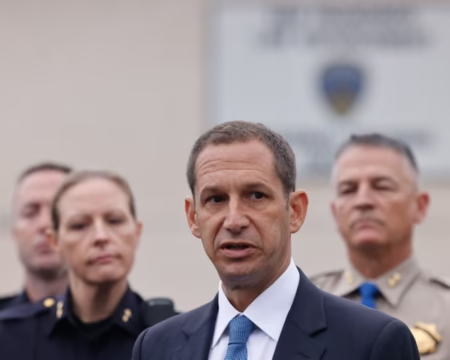More than 100,000 federal employees are set to resign on Tuesday, marking the largest mass departure in U.S. history. The resignations are part of a Trump administration program designed to reduce the federal workforce.
The wave of departures comes as Congress faces a critical deadline. Lawmakers must approve additional funding by Tuesday or risk a government shutdown. Meanwhile, the White House has instructed federal agencies to prepare plans for large-scale firings if Congress fails to reach an agreement.
Federal workers leaving their positions say months of fear and pressure forced their decisions. Many describe a work environment filled with intimidation and uncertainty. A longtime employee at the Federal Emergency Management Agency (FEMA) explained that the lack of job security and a diminished sense of purpose drove the decision to resign. “Federal workers stay for the mission. When that mission is taken away, when they’re scapegoated, when their job security is uncertain, and when their tiny semblance of work-life balance is stripped away, they leave,” the employee said.
This wave of resignations surpasses any previous federal departure events. Analysts note that such a scale of exits can disrupt key government functions and emergency response capabilities. Federal agencies must now scramble to manage operations with significantly reduced staff. The Trump administration’s strategy is part of a broader effort to cut federal spending. Critics argue that the approach risks undermining essential government services and destabilizing agencies that rely on experienced personnel. Supporters claim the plan will streamline operations and reduce bureaucracy.
Lawmakers in Washington are under intense pressure to act. They must approve a new funding measure by Tuesday to prevent a government shutdown. Failure to pass legislation could leave millions of Americans without access to federal services, including health, safety, and administrative programs. The partisan divide in Congress has made agreement challenging, with Republicans and Democrats far apart on budget priorities and funding levels. The Trump administration’s mass resignation plan adds further tension, as agencies could face both voluntary departures and potential firings.
Federal workers describe a workplace climate affected by political pressure. Many say that uncertainty over job security, reduced benefits, and constant scrutiny from leadership left them feeling trapped. For some employees, the decision to resign was unavoidable. Months of uncertainty created stress, eroding morale across multiple agencies. Workers who remain face the challenge of maintaining critical services with fewer colleagues and resources. An official from another federal agency reported that morale is at an all-time low. Many long-serving employees have resigned, leaving behind younger or less experienced staff. This imbalance may affect the efficiency of essential operations.
With more than 100,000 workers leaving, the federal government faces serious operational risks. Agencies like FEMA, the Internal Revenue Service, and the Social Security Administration could experience delays in processing services and responses. Emergency services, regulatory functions, and public programs may be temporarily strained. Analysts warn that the resignations could reduce the government’s ability to respond effectively to crises.
The coming week will be critical. Congress must decide whether to authorize new funding or trigger a shutdown, while the Trump administration continues to push its plan for workforce reductions. Federal employees and citizens alike are watching closely. The historic resignations highlight tensions between political agendas and operational needs in government. Analysts say the situation underscores the importance of experienced federal staff in maintaining essential services. As Tuesday approaches, the scale of these resignations sets a new benchmark in U.S. history and raises questions about the future of federal workforce management under political pressure.







